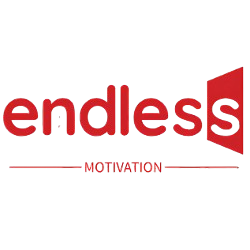In the labyrinth of modern leadership, complexity is a given. Leaders are bombarded with data, conflicting priorities, and the relentless noise of a hyper-connected world. Teams are often distributed, diverse, and distracted. In this environment, the most critical leadership skill is no longer just strategic vision or financial acumen; it is radical clarity. The ability to cut through the static and deliver a message that is not only understood but remembered, believed, and acted upon.
The tool that masters of this art wield, often instinctively, is the three-word quote.
This is not about motivational posters in the breakroom. This is about understanding the fundamental architecture of human attention and memory. A three-word phrase is a linguistic spear—it is easy to remember, effortless to repeat, and carries the entire weight of a strategic directive in a compact, actionable package. From Churchill’s “Never surrender” to Kennedy’s “Ask not what,” history’s most influential leaders have leveraged this power. This exploration will dissect how three-word quotes can become your most potent tool for building culture, driving strategy, and inspiring action in your team or organization.
Part 1: The Neurological Backbone – Why Simplicity Wins in a Complex World
Before a leader can craft a powerful message, they must understand the hardware it’s being received on: the human brain. Three-word quotes are neurologically superior for three key reasons.
1. The Cognitive Load Principle
The brain’s working memory is notoriously limited. When you present a complex, multi-sentence strategy, you risk overloading your team’s cognitive capacity. They may grasp the general idea, but the specifics will blur. A three-word quote like “Customers come first” or “Quality over speed” imposes a minimal cognitive load. It is a simple, clean file that can be easily stored, retrieved, and applied in the moment of decision-making.
2. The “Stickiness” of the Rule of Three
The “Rule of Three” is a cornerstone of rhetoric and communication. Concepts presented in threes are inherently more memorable, persuasive, and satisfying. Think “Veni, Vidi, Vici” (I came, I saw, I conquered) or “Life, Liberty, and the Pursuit of Happiness.” A three-word directive creates a beginning, middle, and end—a complete pattern that the brain recognizes, accepts, and retains. It transforms a managerial instruction into a memorable mantra.
3. The Action-Imperative Frame
Many powerful leadership quotes are structured as imperatives—clear calls to action.
- “Empower the frontline.”
- “Simplify the complex.”
- “Deliver on promises.”
Their lack of explanation is their strength. They don’t get bogged down in the “how” or the “why” at the moment of delivery. They tell the team what to do, creating immediate alignment and empowering them to fill in the blanks with their own initiative and expertise.
Part 2: The Leader’s Toolkit – A Framework for Every Leadership Challenge
Leadership is multifaceted. Different situations require different types of communication. Below is a framework for deploying three-word quotes across the core domains of leadership.
Domain 1: Strategic Direction & Change Management
When navigating uncertainty or launching a new initiative, the team needs a North Star—a simple, guiding light.
- “Clarify the destination.”
- Use Case: At the start of a major project or organizational change. It forces the leader to define the end-goal with absolute clarity, ensuring everyone is rowing in the same direction.
- Alternative: “One team, one goal.”
- “Embrace the pivot.”
- Use Case: When market feedback or new data requires a strategic shift. This phrase frames change not as a failure, but as a necessary and intelligent adaptation. It builds a culture of agility.
- Alternative: “Adapt and overcome.”
- “Progress over perfection.”
- Use Case: To combat analysis paralysis in innovative environments. It gives the team permission to experiment, learn from small failures, and iterate quickly, rather than waiting for a flawless final product.
- Alternative: “Learn and launch.”
Domain 2: Building Culture & Psychological Safety
Culture is the invisible operating system of any team. These quotes help codify and reinforce the desired behaviors.
- “Listen to understand.”
- Use Case: To foster inclusive meetings and defuse conflicts. This directive shifts the focus from waiting for one’s turn to talk to genuinely seeking the other person’s perspective. It is the foundation of empathy and psychological safety.
- Alternative: “Assume positive intent.”
- “Feedback is a gift.”
- Use Case: To normalize and encourage constructive criticism. When a leader models receiving feedback gracefully and repeats this mantra, it transforms feedback from a feared event into a valued tool for collective growth.
- Alternative: “Grow through feedback.”
- “Celebrate small wins.”
- Use Case: To maintain momentum on long-term projects. A culture that only celebrates major milestones misses countless opportunities for reinforcement. This quote reminds everyone to acknowledge progress, fueling motivation and morale.
- Alternative: “Recognize the effort.”
Domain 3: Driving Execution & Accountability
A brilliant strategy is worthless without execution. These quotes focus the team on results and ownership.
- “Own the outcome.”
- Use Case: To foster accountability and discourage blame-shifting. This phrase makes it clear that everyone is responsible for the end result, not just their individual tasks.
- Alternative: “Results, not excuses.”
- “Default to action.”
- Use Case: In organizations burdened by bureaucracy or over-analysis. This empowers individuals to make decisions and take sensible risks without waiting for layers of permission.
- Alternative: “Decide and act.”
- “Simplify, then execute.”
- Use Case: When processes become convoluted. Before charging ahead, this mantra urges the team to strip away unnecessary complexity, leading to more efficient and effective execution.
- Alternative: “Clarity before action.”
Part 3: The Anatomy of an Effective Leadership Quote – A Crafting Guide
Not every three-word combination is powerful. A compelling leadership quote has specific attributes.
- It is Action-Oriented: It uses strong verbs. Instead of “Quality is important,” use “Demand high quality.” The verb “Demand” creates energy and intention.
- It is Unambiguous: It cannot be misinterpreted. “Put safety first” is clear. A phrase like “Think about safety” is weak and open-ended.
- It is Aspirational yet Achievable: It should point toward a higher standard but feel within reach. “Exceed customer expectations” is better than the vague “Be the best.”
- It is Authentic to You: The quote must reflect your true leadership style and values. If you are a collaborative leader, “Win as one” will ring true. If you are a disruptive innovator, “Challenge the status quo” fits better.
The Crafting Exercise:
Take a complex goal or value. Now, distill it into three words.
- Complex Goal: “We need to improve inter-departmental communication and collaboration to foster innovation.”
- Distilled Quote: “Connect and create.”
- Complex Value: “We believe in empowering every employee to make decisions that benefit the customer without always seeking managerial approval.”
- Distilled Quote: “Empower the front line.”
Part 4: From Words to Action – How to Embed Mantras in Your Organization
A quote spoken once is forgotten. A mantra woven into the fabric of an organization becomes culture.
- Model Relentlessly: You must be the living embodiment of your mantra. If your phrase is “Listen to understand,” you must be the best listener in the room. Your actions give the words their power.
- Repeat with Context: Don’t just state the quote; frame it. In a meeting, you might say, “Remember, our principle is ‘progress over perfection.’ So let’s not get stuck on this detail; let’s make a decision and move forward.”
- Weave into Rituals: Incorporate the quotes into your team’s routines. Use them as meeting kick-starters, include them in recognition awards, or feature them in internal communications.
- Hire and Recognize by Them: Make these mantras part of your hiring criteria. Ask candidates for examples of when they lived a similar value. Publicly recognize team members who exemplify the quotes in their work.
Conclusion: Your Leadership Legacy, in Three Words
The legacy of a leader is not written in their business plans or financial reports. It is etched into the minds and hearts of their team through the words they repeat and the culture they build. In an age of overwhelming complexity, the leader’s most profound gift to their team is clarity.
The three-word quote is the ultimate tool for delivering that gift. It is the drumbeat that keeps the march in time. It is the lighthouse that guides the ship through the storm. It is the cultural DNA that replicates in every decision and every interaction.
So, what will your mantra be? What is the one, two, or three core principles that you want your team to carry with them, even when you’re not in the room?
Define them. Distill them. Live them. Your leadership legacy will be defined not by the complexity of your strategies, but by the simplicity and power of your words.
Your team is waiting. Lead them.

